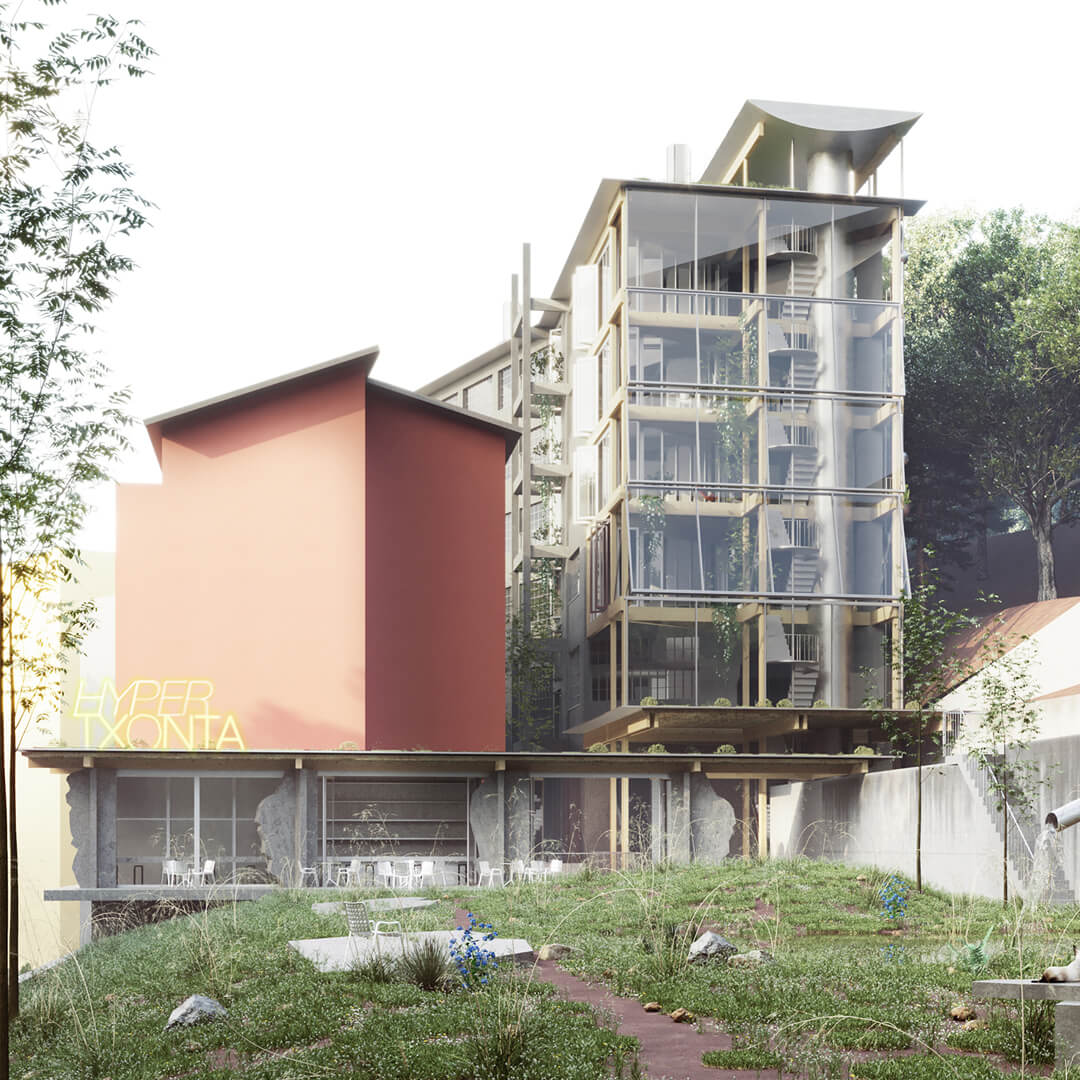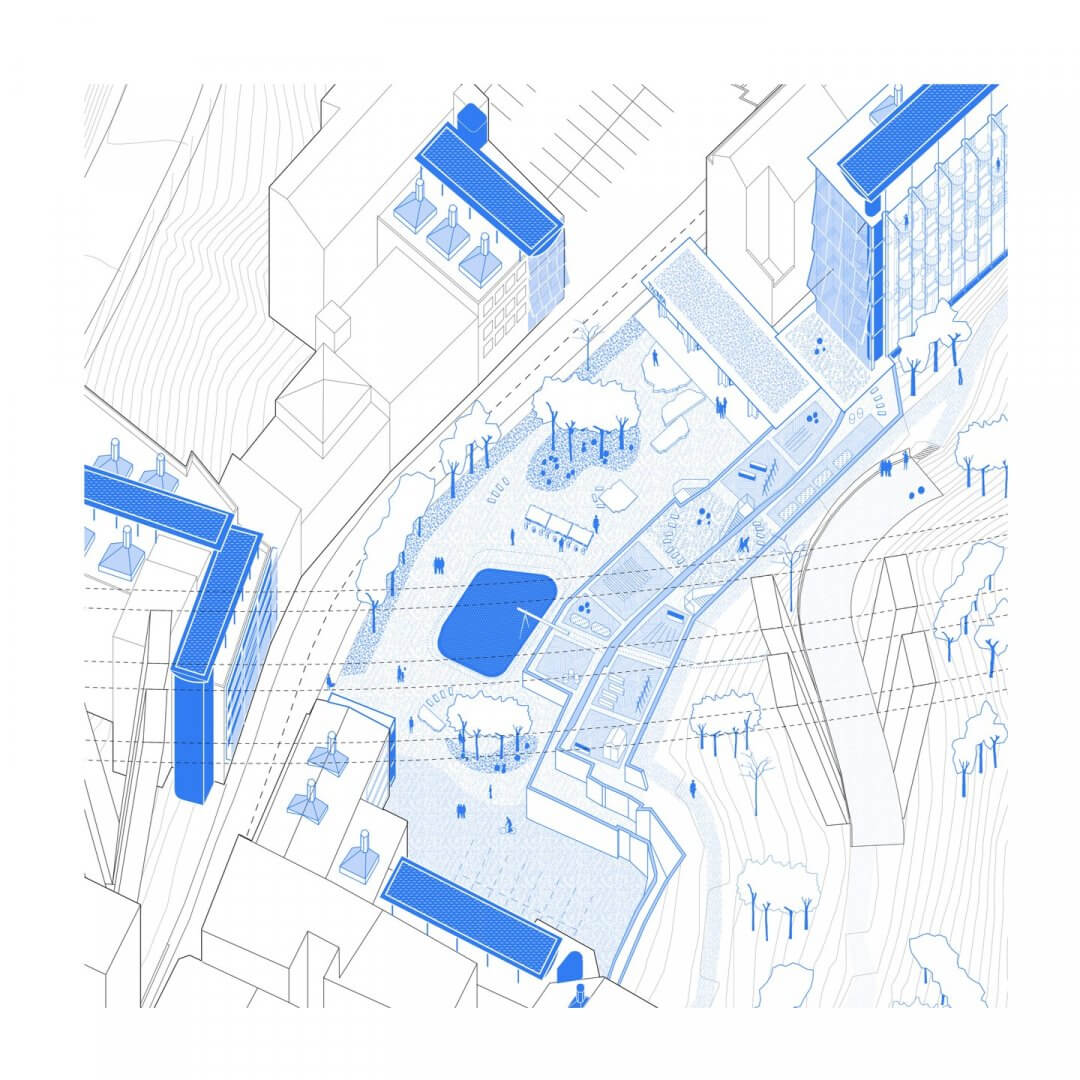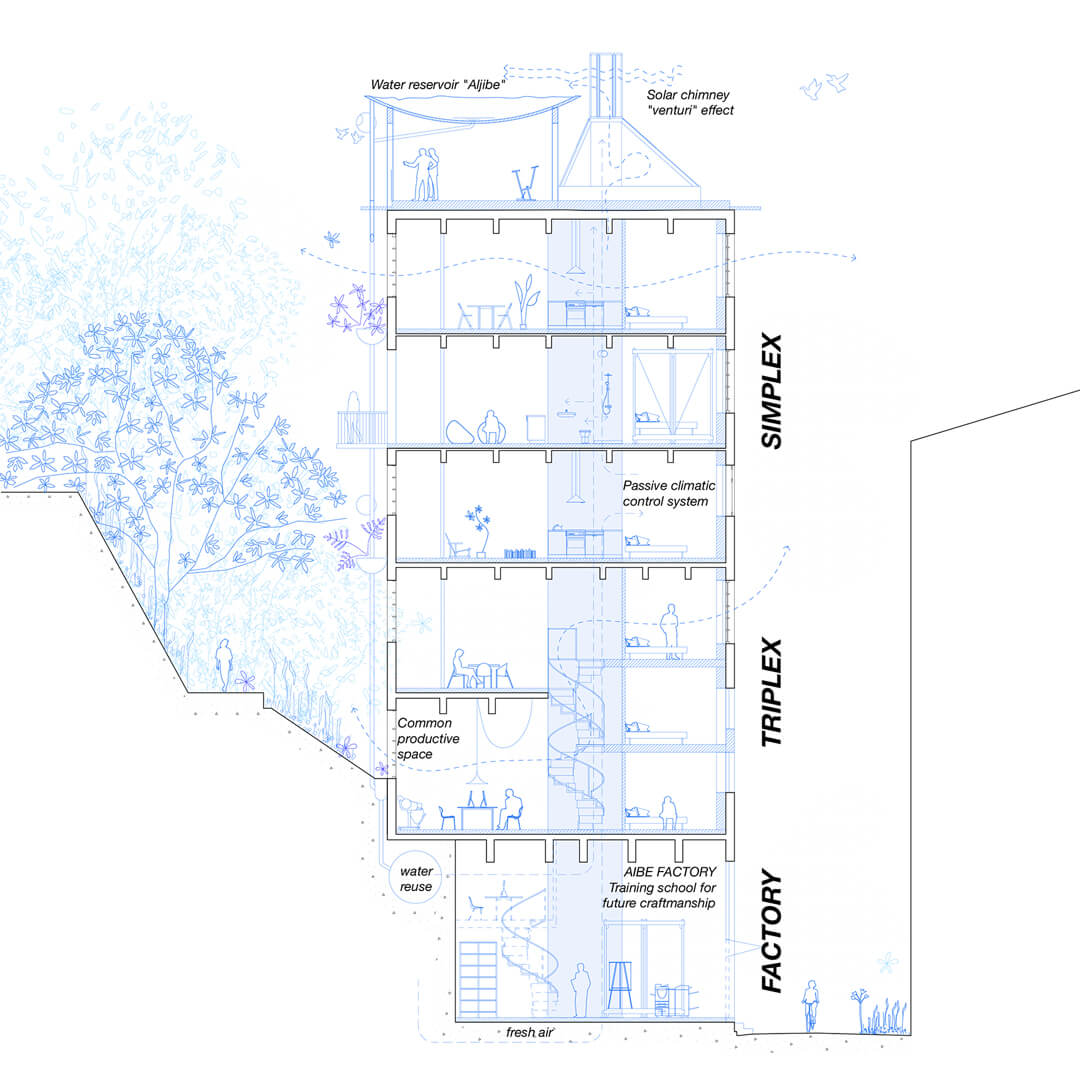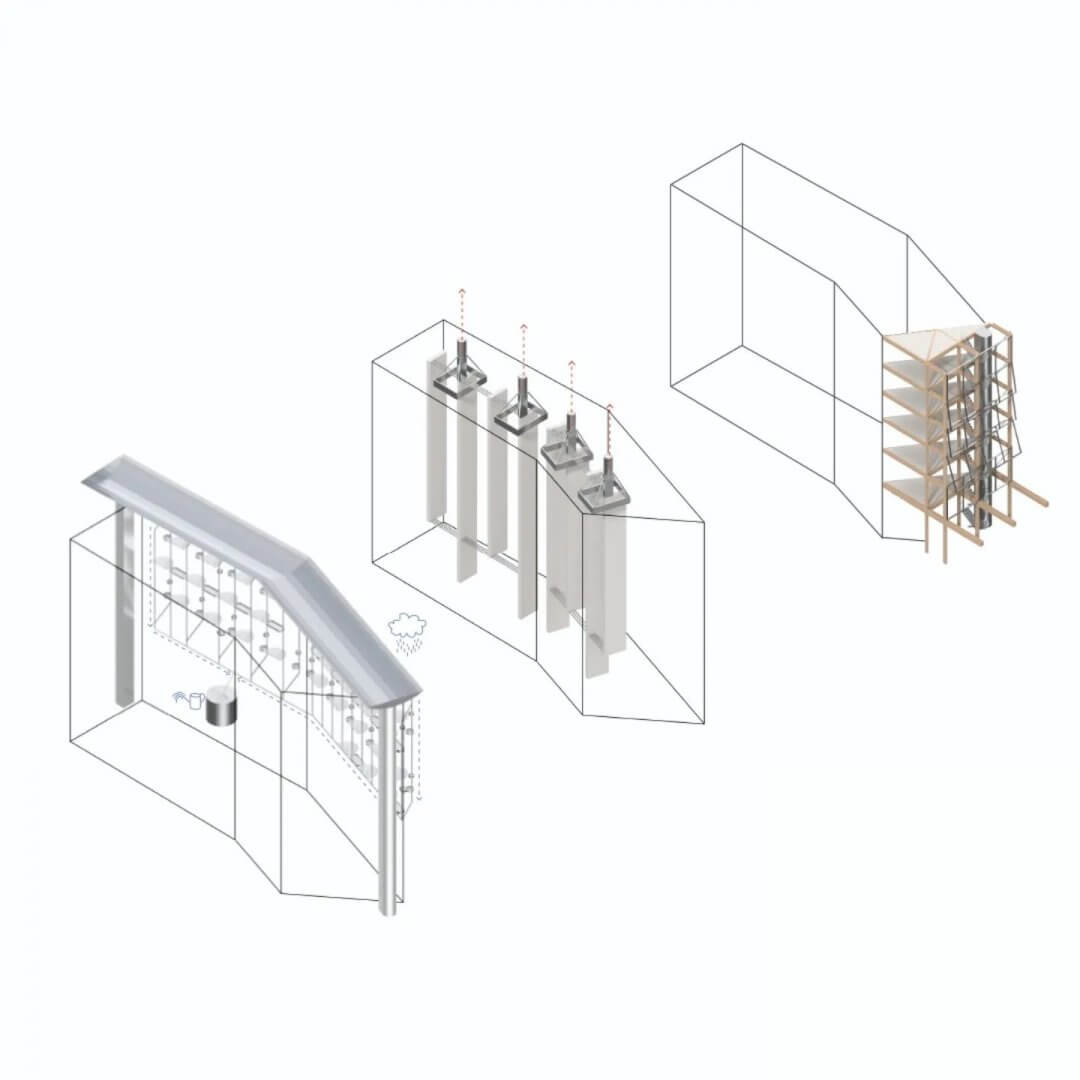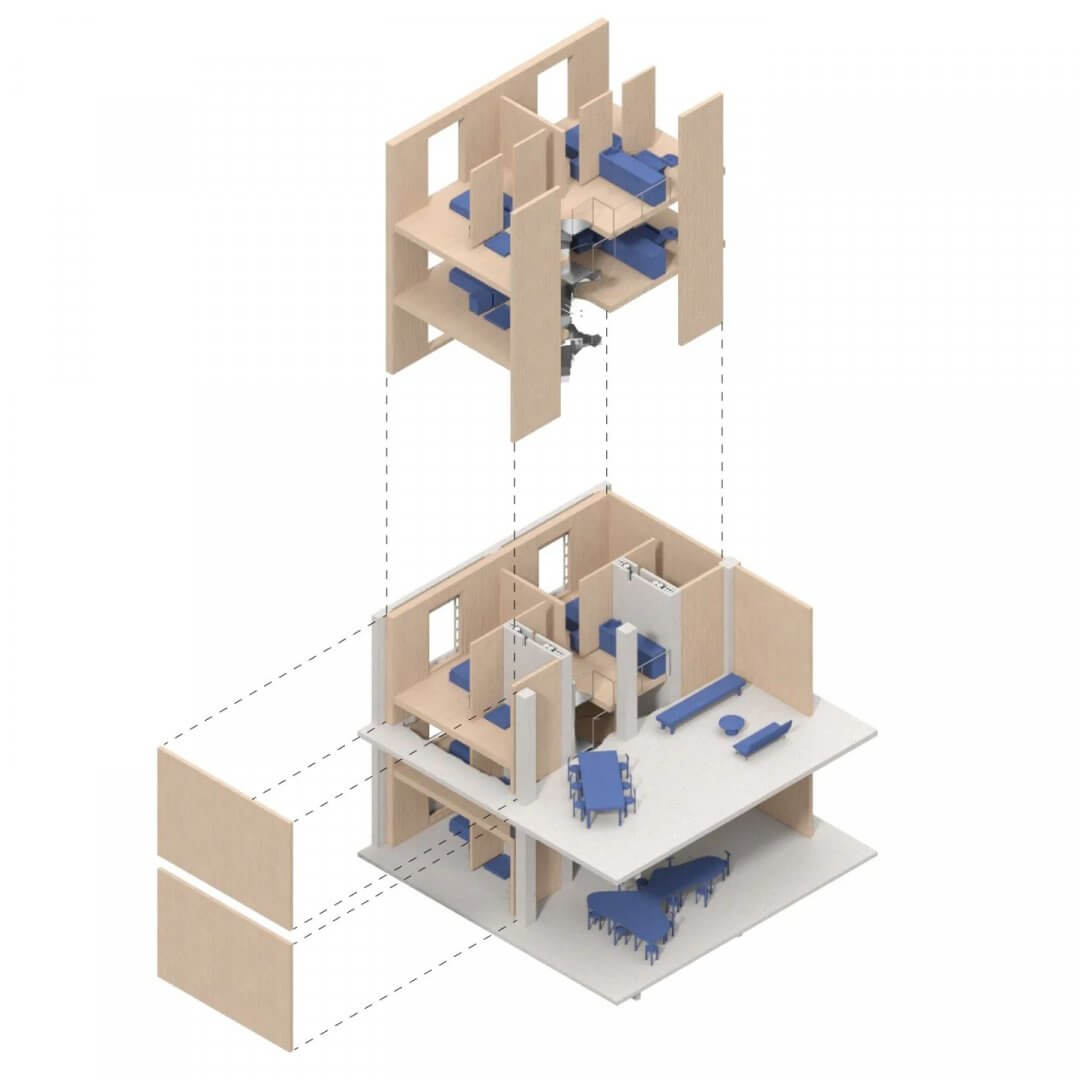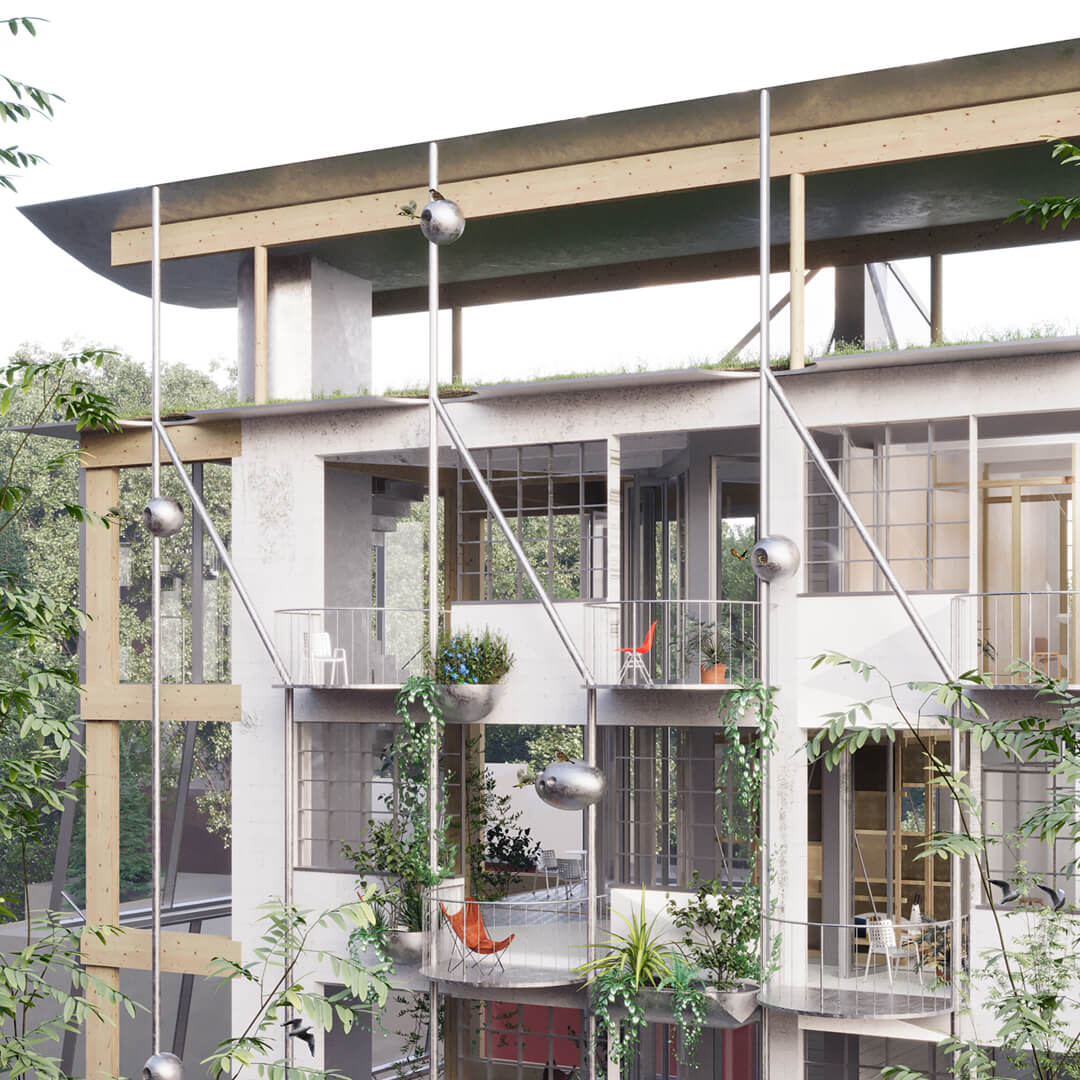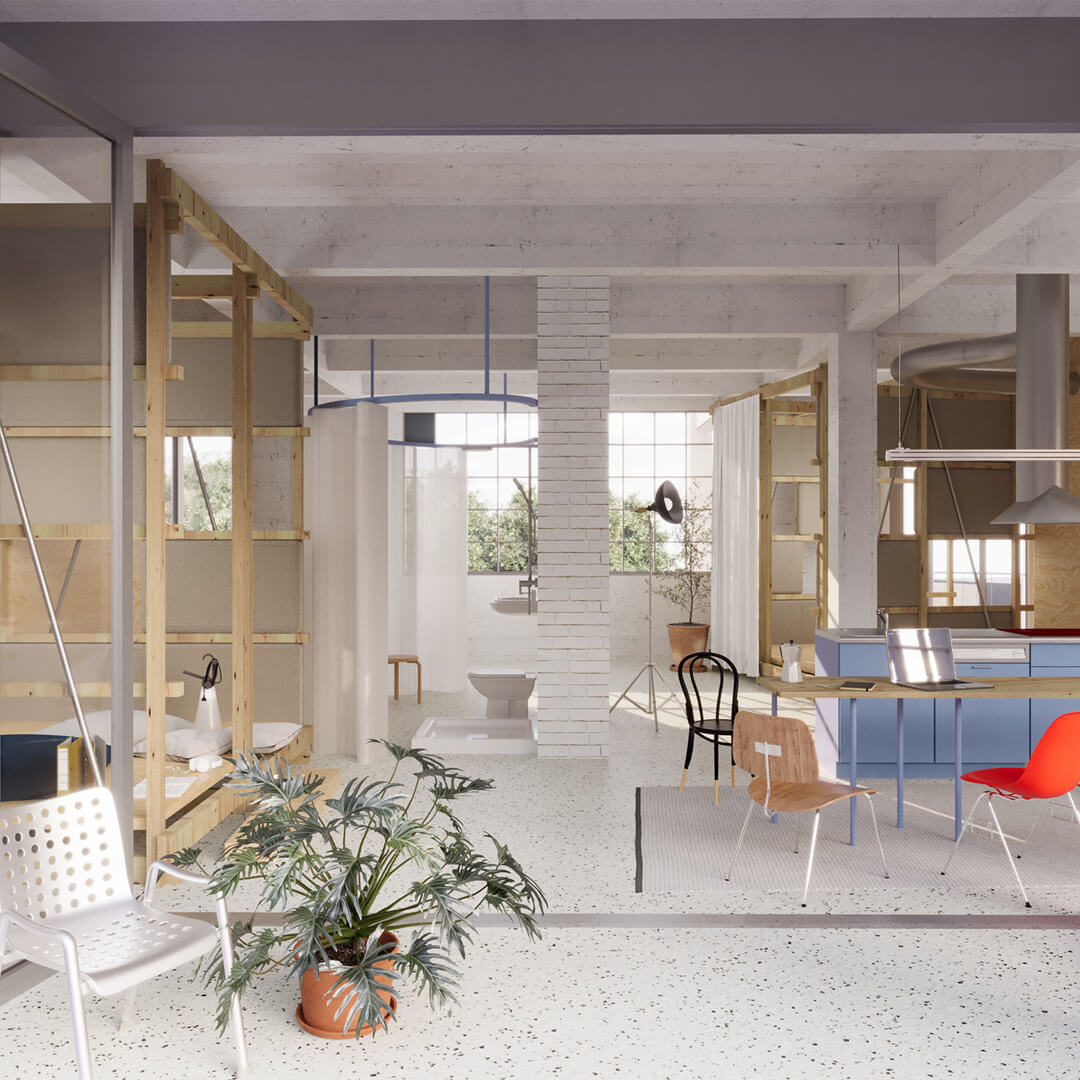Garbizu Collar Architecture+KRI+Diego Sologuren
Hyper-txonta is a model for the regeneration of industrial heritage in the Basque Country through the implementation of a catalog of possible solutions.
The city of Eibar grew under a traditional Marshallian industrial fabric based on the specialized gun industry. As the economist Igor Goñi mentions: “To compete with the large industrial warehouses of the Central European plains, the industrial fabric of Eibar was based on vertical factories interconnected through the subcontracting relationship between them.” The jobs would not be related by the size of the factories, but by the independent production phases carried out in them.
After the iron and steel crisis in the 1980s, the gun industry suffered a severe setback, resulting in the dismantling and abandonment of these infrastructures that are part of the industrial heritage of Euskadi. The coexistence between industrial facilities in operation, transport infrastructure, housing, reuse, demolitions, ruins and wild nature, reveals a complex palimpsest that has made up the settlement of Txonta since the 1950s. We identified a potential to guide a transition from its tough industrial genealogy towards an environment of human quality: redefining the adaptation mechanisms of its industrial fabric, reducing the carbon footprint by introducing reuse strategies and finding territorial cohesion of an eroded urban landscape to address ecological and climate issues.
Hyper-txonta is a model for the regeneration of industrial buildings that arises from the analysis of a specific territorial context that shares common features with its built environment. It is constituted as a decalogue that considers that the industrial heritage of the Basque region contains a strong potential for transformation and adaptation to new architectural and urban paradigms. Due to its adaptability and flexibility, it can be exported to a broader range of cases within the territory.
Hyper-txonta follows the logic and operating principles of industrial constructs and functions as a multi-layered connective and integrative system. Since it is conceived as modular, changeable and scalable, it can be applied totally or partially according to each case study. Hyper-txonta presents a series of strategies for urban and domestic regeneration. These are deployed through a matrix of disciplinary mechanisms adapted to the precise context and responding to new Anthropocene perceptions.
Authors: Garbizu Collar Architecture (Victoria Collar+Jon Garbizu)+KRI (Gonzalo Peña)+Diego Sologuren.
Website: garbizucollar.com + kri.archi + diegosologuren.com
Location: Eibar, Spain.
Year: 2023
Competition: EUROPAN 17.
Prize: 2nd prize.
